Mechanics of gamification: skill tree
Hi, Habr! We continue to talk about the mechanics of gamification. The last article told about the rating, and in this talk about the tree of skills (technological tree, skill tree). Consider how the tree is used in games and how this mechanics can be applied in gamification.

The skill tree is a special case of a technological tree, the prototype of which first appeared in the board game Civilization back in the 1980s. Its author, suddenly, is not Sid Meier, but Francis Trasham. However, in computer games, the primacy of this mechanics (as well as the final formation in its usual form) belongs to the old Sid in the classic 1991 Sid Meier's Civilization. Since then, the technological tree has been used in game devs not only in strategies and RPGs, but even in action games and shooters. In the article I do not pay attention to the difference between the skill tree and the technological tree, and under the skill tree I mean both. I consider both spellings (skill tree and skill tree) to be correct, but I will use the latter in the article, as it is more common in game dev.

It all started with this. The Sid Meier Civilization Technology Tree.
')
If you want to learn more about the history of the mechanics of the tree or about the principles of its construction, then the starting point is the Wikipedia page of the same name . In my article we will consider the types of trees from modern (and not so) games, pay attention to the problems of mechanics, try to give solutions to these problems and think about the specific ways of applying the skill tree mechanics in gamification. Why just think? Unfortunately, I was not able to find valid examples of using the tree of skills in a non-player context. If you come across such examples, I will be grateful for mentioning them in the comments to this article.
Before using game mechanics in gamification, you need to study the experience of game dev. To analyze how mechanics is used in games, what is attractive for players, what kind of fan people get by interacting with this mechanics. According to the tree of skills, I recommend watching a video of Mark Brown or an article that translates the main points of this video on dtf.ru. Mark's theses are relevant not only in game devs, but also for the gamification of non-game systems and projects.
On the types of tree skills (on the principle of construction, the type of game, etc.) is described in detail in the above-mentioned article in Wikipedia. I don’t see any reason to quote, so I suggest looking at some interesting trees that are found in games.
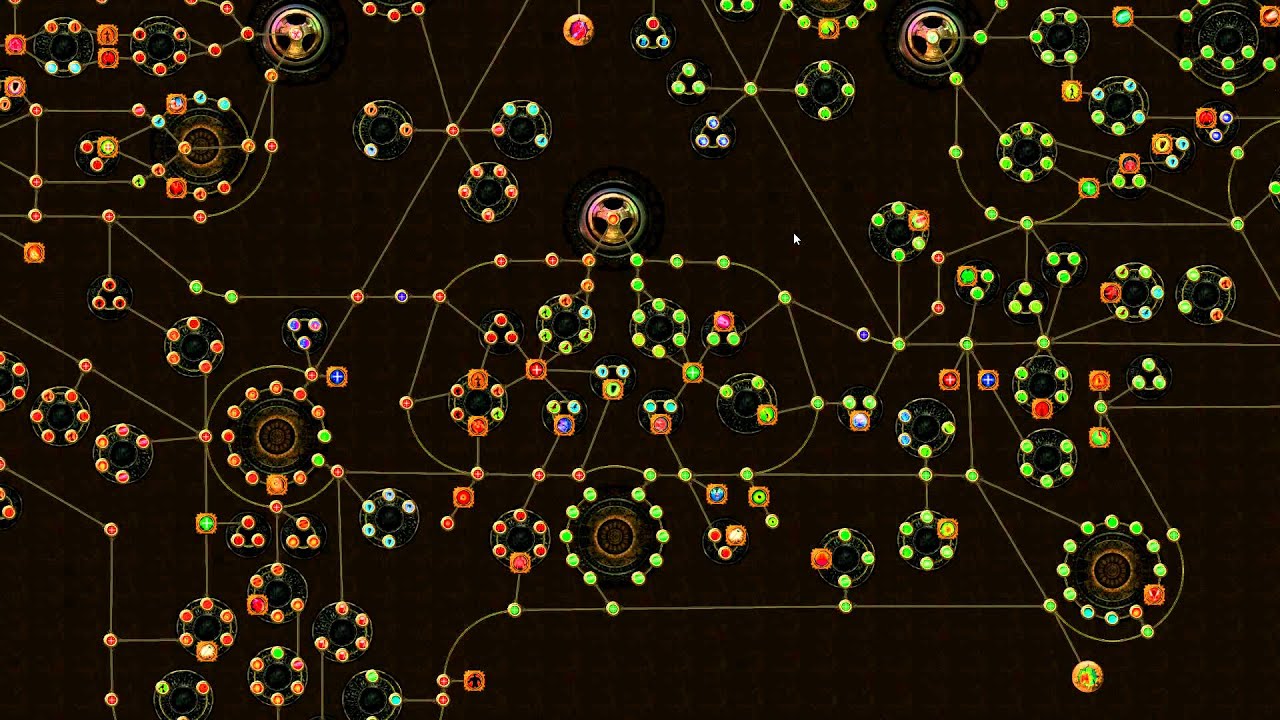
Reference example of the skill tree from the game Path of Exile. It is found in most mentions, memes and demotivators about the tree of skills. Despite the apparent complexity, the tree is logical and quickly mastered by the players. But for gamification, such a tree size is too large, the level of involvement of users of a gami ed system is not enough to deal with it.
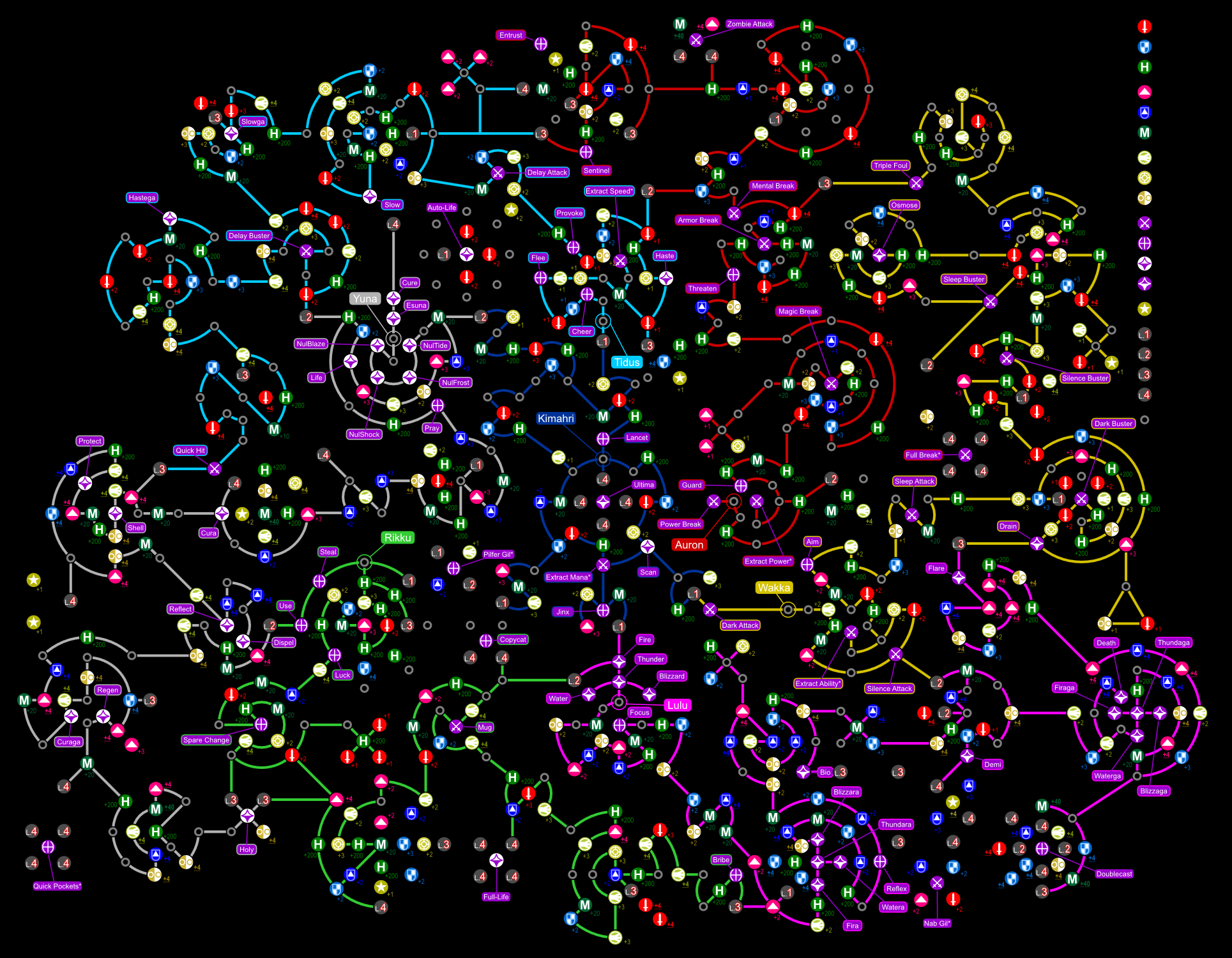
Another big and complex tree from Final Fantasy X
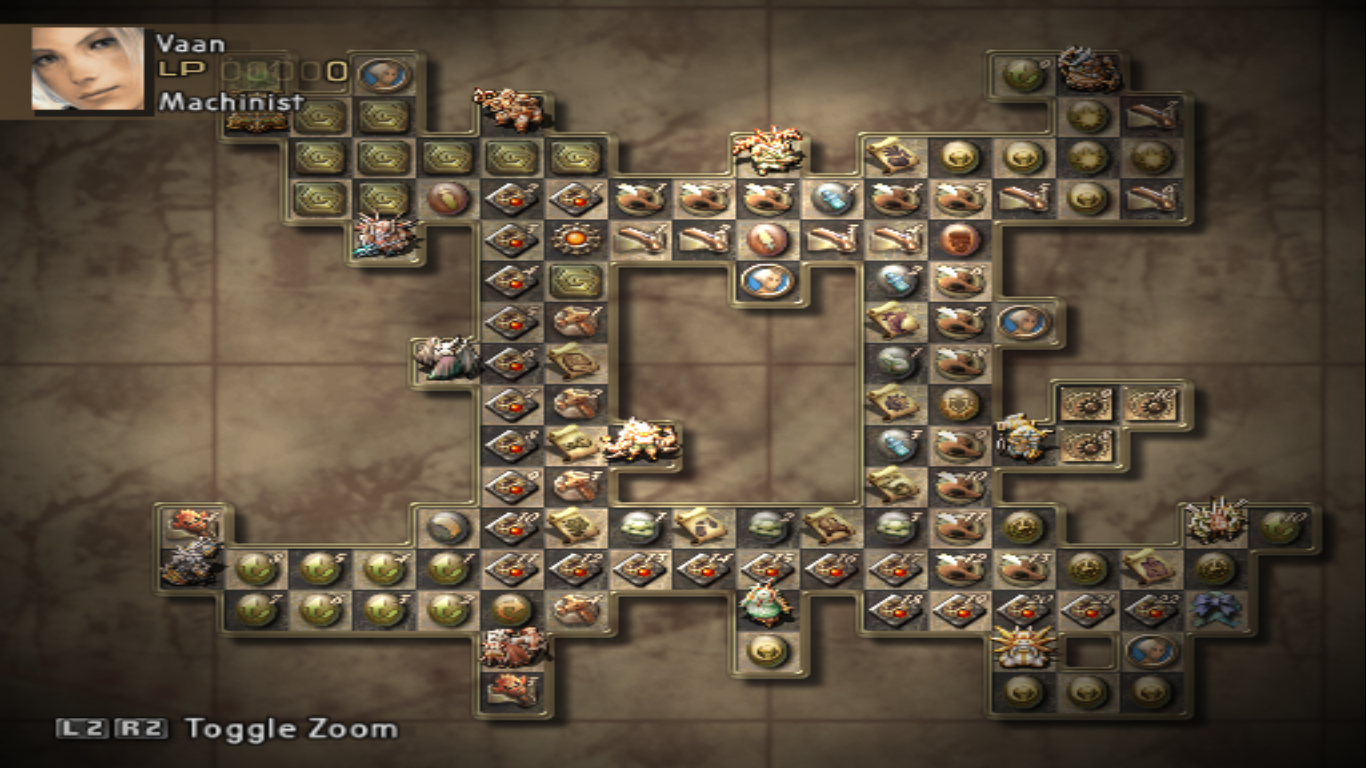
Again, a series of Final Fantasy distinguished, this time - the twelfth part. The tree is smaller than a tenth, but it looks too unusual and difficult to understand. Where is the start here? Where is the finish? Is this a tree at all?
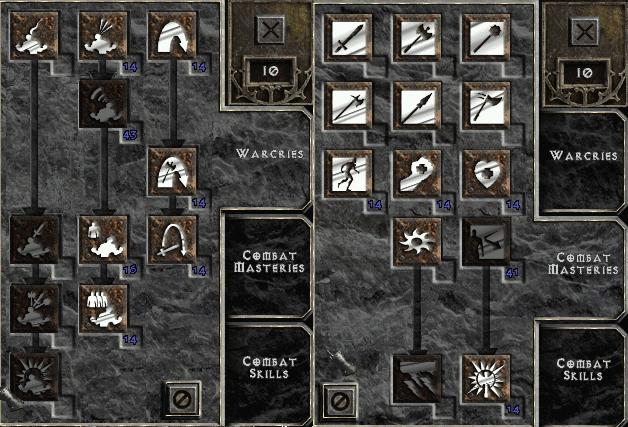
Old school skill tree from Diablo 2 (gluing together two screenshots). Notice the principle of dividing a tree into three tabs, essentially representing three separate trees of skills of a smaller scale.

Good, good tree of skills from modern game development. Assassin's Creed: Origins. Pay attention to the successful design solution: a bright, contrasting selection of the learned skills and the ways that they open.
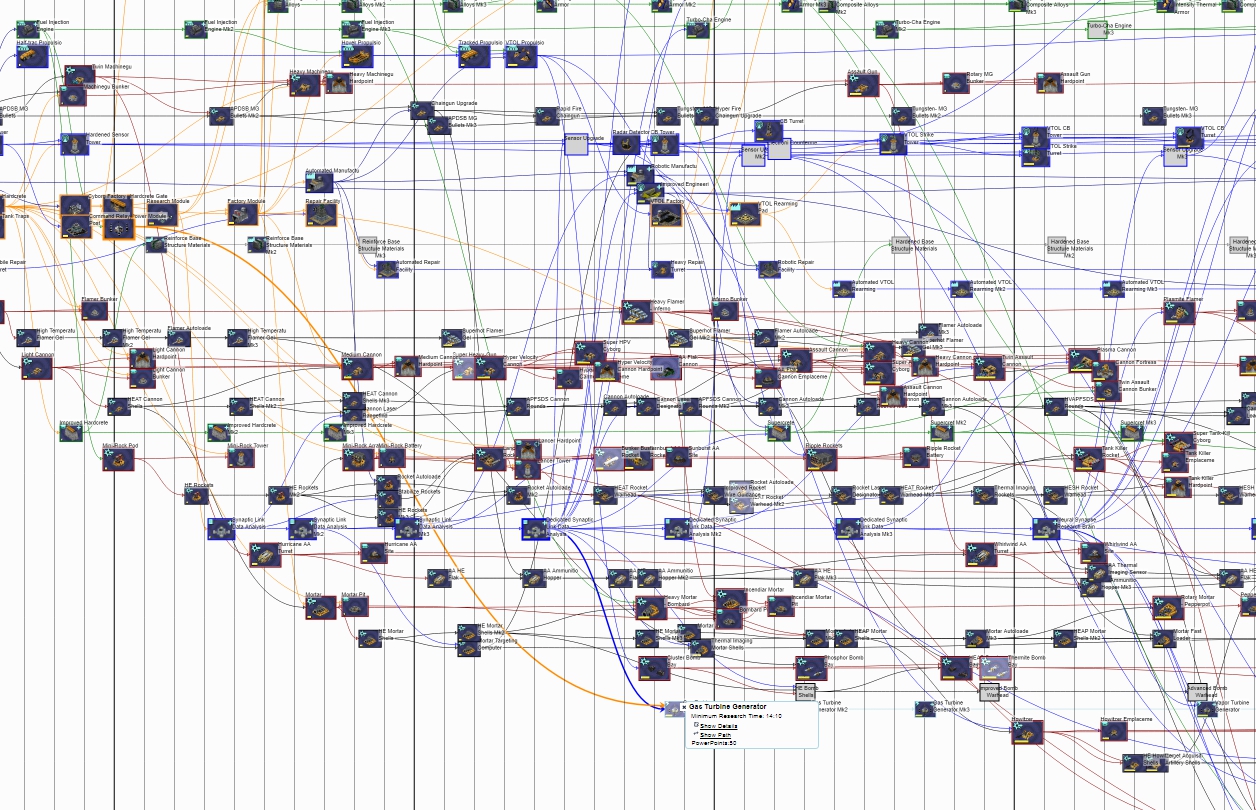
The most chthonic example I could find. Technological tree Warzone 2100. I recommend to follow the link to see it in 100% scale.
How can the mechanics of the tree of skills be applied in gamification? Two obvious options are a) a system of training and personnel reserve, and b) a loyalty program. The skill tree in loyalty programs is a system of discounts and other bonuses that are customized for each client by the client.
The first option: distance learning portals and internal corporate portals. In both cases, the task is the same - to structure possible theoretical skills, to show the system user what path he must follow in order to gain a certain competence. Suppose you settled a job in a new company as a junior analyst. On the corporate portal, you have access to a tree of personal competencies, by which you can easily understand what theoretical skills you lack to the level of a senior analyst, you can see what you need to learn if you want to go into the field of project management, etc. The management of the company, in turn, gets a complete picture of the competencies of employees. Such a system, in theory, facilitates the formation of personnel reserve and vertical growth of employees in the company, increases the overall level of competence of employees.
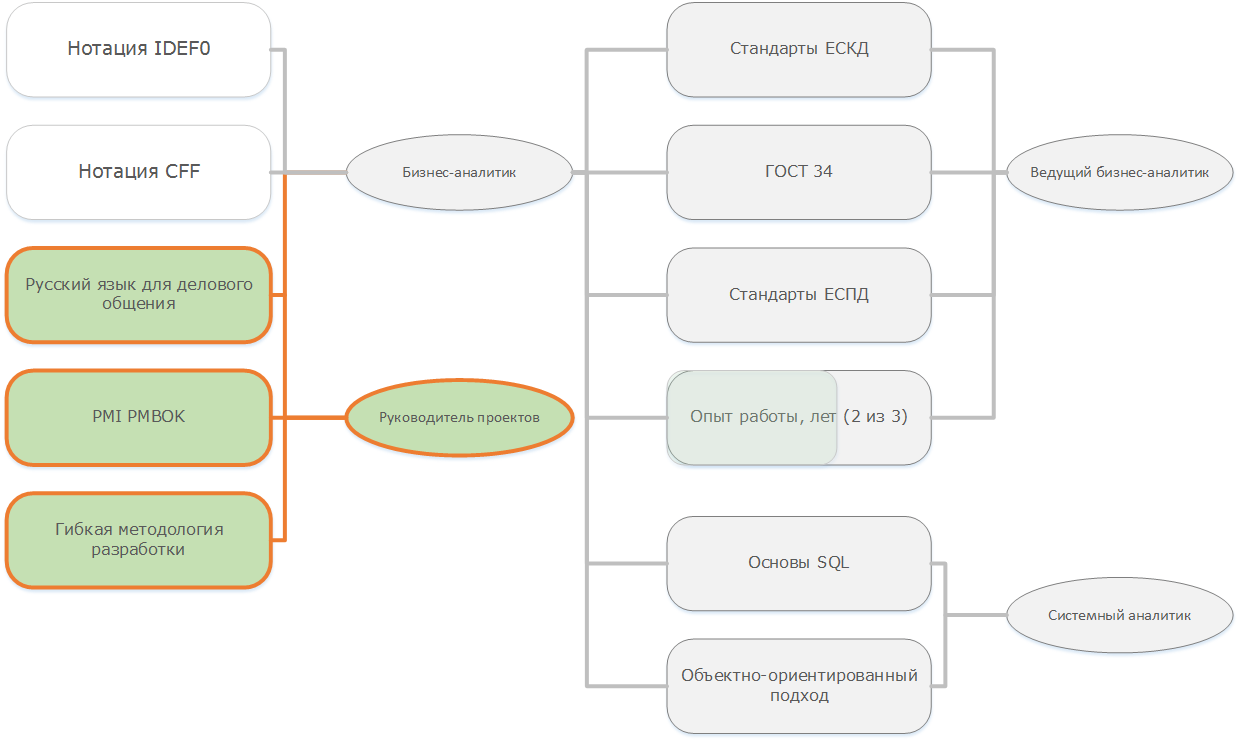
A simple layout of the skill tree part for the company's internal portal. In a real company, the tree will be larger, but for an example reflecting the basic meaning, such is also suitable.
Consider the layout in more detail. Learned skills (rectangles) and specialties (ellipses) are highlighted with green shading, white skills are available for learning. Gray fill highlighted inaccessible skills and specialties. Orange and gray lines show the path between skills and specialties, orange - already traversed path, gray - not yet traversed. By clicking on a rectangle, in my opinion, it is logical to open a window with the option of enrolling in a course on a chosen skill, or with information on where and how this course can be taken and confirmed (for example, if the portal has no integration with a distance education system). By clicking on the ellipse, we show a window with a description of the specialty (duties, salary fork, etc.). Pay attention to the experience: strictly speaking, it is not a skill, but it demonstrates the possibility of embedding in the tree of skills not only theoretical competencies, but also other necessary requirements for the specialty. A progress bar is built into the experience rectangle that clearly shows the user's progress.
The second way to use the mechanics of the tree of skills is the development of loyalty cards. Imagine a classic version of a loyalty card for a large store, for example, sporting goods, clothes and shoes. As a rule, such a card gives a percentage of the discount when the buyer reaches the specified amount of purchases, or bonuses may be added to the card, which are used to partially pay for future purchases. This is better than nothing, it works, but such a card does not imply any flexible configuration for a particular client. And what if we give the client the opportunity to choose, for example, a 5% discount on all products or 10%, but only on men's shoes? And at the next level reached, for example, an increase in the guarantee to 365 days or a 2% discount on snowboards? In theory, such a loyalty system will work better than usual, because no one better than the person himself knows what he needs. A company that has implemented such a system will stand out in the monotonous market of loyalty programs (in which there have been no interesting new products for a long time), get more data on customer preferences, increase their level of attachment to the store, and even be able to reduce the cost of loyalty system as a result version.
Reducing costs is possible with the help of a competent balance setting in the tree of skills. When developing, it is necessary to calculate how many conditional points (in ruble equivalent) each of the skills will cost (it is not at all necessary that the skills cost the same), compare the results obtained with the classical loyalty program and “calibrate” the resulting system. For example, take a shoe store that sells men's, women's and children's shoes. The classic loyalty program gives a 5% discount on all products after reaching the amount of purchases of 20,000 rubles. In the new system we will make the cost of one skill equal to 10,000 rubles, and offer the client three options - 5% for men's shoes, 5% for women’s and 5% for children’s. Suppose we do not put a hard choice, and the client will be able to open all three skills. To do this, he will need to spend in the store no longer 20,000 rubles, as in the case of the classic version, but 30,000. But most customers will be satisfied with this “tightening the screws” (and they will not even consider it so), because the discount on the most important they will get the category by spending two times less money than in the classic version.
Immediately, let us say: but then the buyer will receive a discount on the most important category of goods for him faster. True, but I believe that most buyers do not make purchases only in the selected category. Today, a man buys his shoes, tomorrow - his wife's shoes, and after six months they have a child who also needs shoes. The larger the store, the more buyers and the more varied the assortment, the better this model will work, and the more interesting it is for the store to give buyers the opportunity to choose discounts for certain categories of goods (even for narrow categories).
Another reason for using the tree of skills in loyalty programs is the dislike of the human brain for incomplete actions. Another game mechanic is based on this: a progress bar. I believe that in our situation, the brains of buyers will spur to discover new and new skills in the tree, to engage in a kind of munchkin, to strive to get all the skills of the tree. And spend more money on it than with a classic loyalty program. Therefore, although Mark Brown recommends making games in games that cannot be opened completely, in loyalty programs, I, on the contrary, advise you not to limit customers and not make them think about choosing the right distribution of points. In the end, the level of customer involvement in the loyalty program is less than the level of player involvement in the new game, so you should not give such tasks unnecessarily.
In the final part of the article we will talk about the problems and questions of applying the mechanics of the tree of skills in practice.
Show or not the tree of skills all at once? In some games, the player does not see the whole tree and learns about possible skills only as they are achieved. I think that such a concealment is of no use in gamification. Show the tree immediately, motivate the user to build their own tree development strategy.
When designing a tree for gamification, lay in it the ability to reset skills with the saved experience and the ability to redistribute skills. Such a function will relieve users from unnecessary responsibility in the distribution of skills, will provide an opportunity to adapt the loyalty program to changes in the user's life. Having a child, moving to another city, raising or decreasing at work, jumps in the dollar exchange rate - many factors influence a strong change in consumption habits. The skill reset feature will allow the system to remain relevant in such situations. But do not make this function too accessible, otherwise users will simply reset their skills at the checkout before paying, choosing the right ones at the moment and depriving the system of the original meaning. It is normal to give such an opportunity once a year, after the New Year holidays or on the birthday of the company.
Consider the mechanics of scoring in the system. One point will be equal to one ruble? Or a thousand rubles? Is it worth it to put in the system the possibility of an increased scoring factor for certain periods or for certain products? Can these points pay for goods instead of opening skills? Or will the bonus points and points needed to open skills be different entities in the system?
The important point is what will the skill tree consist of? What are the bonuses put into it? Will skills have levels? For example, the skill of the first level gives a discount of 1%, and the same skill of the fifth level - already in 5%. But do not get carried away with just such bonuses: in games, and in gamification, such a tree will be boring. Add new features and capabilities, not just enhance existing ones. For example, in the tree you can unlock the passage to the checkout without a queue, or an invitation to closed sales, or other exclusive features. The skill tree in loyalty programs is not only discounts on goods and services. The skill tree in the game should provoke players to master new content, and in the loyalty program, encourage additional purchases in different product categories.
Who can use this mechanics to gamify loyalty programs? In my opinion, small, medium and large businesses operating in the field of B2C and offering at least five (and preferably ten) types of goods and services. Pizza, woks, rolls and sushi are different types of products in my understanding. Haircut beard, mustache and head, children's haircut and hair coloring - different types of services. Red or green shoes, pizza margherita and barbecue pizza are the same types of goods. The skill tree, consisting of bonuses for one or two types of goods, in my opinion, is not needed. In such a situation, it is easier to use the classic loyalty program.
The problem with the design and implementation of such a system, in my opinion, is the lack of necessary competencies in the company-owner. The skill tree is difficult to make commercially effective by the marketing department, without experience in gamification, and most importantly without a game designer with experience in balancing such a system. However, it is not necessary to hire new employees in the state; most of the tasks can be closed by remote work and consultations.
Thanks to everyone who read the article to the end, I hope the information in it was something useful for you. I would be happy if you share experiences, problems and interesting thoughts in the field of gamification of loyalty programs and training systems in the comments.

The skill tree is a special case of a technological tree, the prototype of which first appeared in the board game Civilization back in the 1980s. Its author, suddenly, is not Sid Meier, but Francis Trasham. However, in computer games, the primacy of this mechanics (as well as the final formation in its usual form) belongs to the old Sid in the classic 1991 Sid Meier's Civilization. Since then, the technological tree has been used in game devs not only in strategies and RPGs, but even in action games and shooters. In the article I do not pay attention to the difference between the skill tree and the technological tree, and under the skill tree I mean both. I consider both spellings (skill tree and skill tree) to be correct, but I will use the latter in the article, as it is more common in game dev.

It all started with this. The Sid Meier Civilization Technology Tree.
')
If you want to learn more about the history of the mechanics of the tree or about the principles of its construction, then the starting point is the Wikipedia page of the same name . In my article we will consider the types of trees from modern (and not so) games, pay attention to the problems of mechanics, try to give solutions to these problems and think about the specific ways of applying the skill tree mechanics in gamification. Why just think? Unfortunately, I was not able to find valid examples of using the tree of skills in a non-player context. If you come across such examples, I will be grateful for mentioning them in the comments to this article.
Before using game mechanics in gamification, you need to study the experience of game dev. To analyze how mechanics is used in games, what is attractive for players, what kind of fan people get by interacting with this mechanics. According to the tree of skills, I recommend watching a video of Mark Brown or an article that translates the main points of this video on dtf.ru. Mark's theses are relevant not only in game devs, but also for the gamification of non-game systems and projects.
On the types of tree skills (on the principle of construction, the type of game, etc.) is described in detail in the above-mentioned article in Wikipedia. I don’t see any reason to quote, so I suggest looking at some interesting trees that are found in games.

Reference example of the skill tree from the game Path of Exile. It is found in most mentions, memes and demotivators about the tree of skills. Despite the apparent complexity, the tree is logical and quickly mastered by the players. But for gamification, such a tree size is too large, the level of involvement of users of a gami ed system is not enough to deal with it.

Another big and complex tree from Final Fantasy X

Again, a series of Final Fantasy distinguished, this time - the twelfth part. The tree is smaller than a tenth, but it looks too unusual and difficult to understand. Where is the start here? Where is the finish? Is this a tree at all?

Old school skill tree from Diablo 2 (gluing together two screenshots). Notice the principle of dividing a tree into three tabs, essentially representing three separate trees of skills of a smaller scale.

Good, good tree of skills from modern game development. Assassin's Creed: Origins. Pay attention to the successful design solution: a bright, contrasting selection of the learned skills and the ways that they open.

The most chthonic example I could find. Technological tree Warzone 2100. I recommend to follow the link to see it in 100% scale.
How can the mechanics of the tree of skills be applied in gamification? Two obvious options are a) a system of training and personnel reserve, and b) a loyalty program. The skill tree in loyalty programs is a system of discounts and other bonuses that are customized for each client by the client.
The first option: distance learning portals and internal corporate portals. In both cases, the task is the same - to structure possible theoretical skills, to show the system user what path he must follow in order to gain a certain competence. Suppose you settled a job in a new company as a junior analyst. On the corporate portal, you have access to a tree of personal competencies, by which you can easily understand what theoretical skills you lack to the level of a senior analyst, you can see what you need to learn if you want to go into the field of project management, etc. The management of the company, in turn, gets a complete picture of the competencies of employees. Such a system, in theory, facilitates the formation of personnel reserve and vertical growth of employees in the company, increases the overall level of competence of employees.

A simple layout of the skill tree part for the company's internal portal. In a real company, the tree will be larger, but for an example reflecting the basic meaning, such is also suitable.
Consider the layout in more detail. Learned skills (rectangles) and specialties (ellipses) are highlighted with green shading, white skills are available for learning. Gray fill highlighted inaccessible skills and specialties. Orange and gray lines show the path between skills and specialties, orange - already traversed path, gray - not yet traversed. By clicking on a rectangle, in my opinion, it is logical to open a window with the option of enrolling in a course on a chosen skill, or with information on where and how this course can be taken and confirmed (for example, if the portal has no integration with a distance education system). By clicking on the ellipse, we show a window with a description of the specialty (duties, salary fork, etc.). Pay attention to the experience: strictly speaking, it is not a skill, but it demonstrates the possibility of embedding in the tree of skills not only theoretical competencies, but also other necessary requirements for the specialty. A progress bar is built into the experience rectangle that clearly shows the user's progress.
The second way to use the mechanics of the tree of skills is the development of loyalty cards. Imagine a classic version of a loyalty card for a large store, for example, sporting goods, clothes and shoes. As a rule, such a card gives a percentage of the discount when the buyer reaches the specified amount of purchases, or bonuses may be added to the card, which are used to partially pay for future purchases. This is better than nothing, it works, but such a card does not imply any flexible configuration for a particular client. And what if we give the client the opportunity to choose, for example, a 5% discount on all products or 10%, but only on men's shoes? And at the next level reached, for example, an increase in the guarantee to 365 days or a 2% discount on snowboards? In theory, such a loyalty system will work better than usual, because no one better than the person himself knows what he needs. A company that has implemented such a system will stand out in the monotonous market of loyalty programs (in which there have been no interesting new products for a long time), get more data on customer preferences, increase their level of attachment to the store, and even be able to reduce the cost of loyalty system as a result version.
Reducing costs is possible with the help of a competent balance setting in the tree of skills. When developing, it is necessary to calculate how many conditional points (in ruble equivalent) each of the skills will cost (it is not at all necessary that the skills cost the same), compare the results obtained with the classical loyalty program and “calibrate” the resulting system. For example, take a shoe store that sells men's, women's and children's shoes. The classic loyalty program gives a 5% discount on all products after reaching the amount of purchases of 20,000 rubles. In the new system we will make the cost of one skill equal to 10,000 rubles, and offer the client three options - 5% for men's shoes, 5% for women’s and 5% for children’s. Suppose we do not put a hard choice, and the client will be able to open all three skills. To do this, he will need to spend in the store no longer 20,000 rubles, as in the case of the classic version, but 30,000. But most customers will be satisfied with this “tightening the screws” (and they will not even consider it so), because the discount on the most important they will get the category by spending two times less money than in the classic version.
Immediately, let us say: but then the buyer will receive a discount on the most important category of goods for him faster. True, but I believe that most buyers do not make purchases only in the selected category. Today, a man buys his shoes, tomorrow - his wife's shoes, and after six months they have a child who also needs shoes. The larger the store, the more buyers and the more varied the assortment, the better this model will work, and the more interesting it is for the store to give buyers the opportunity to choose discounts for certain categories of goods (even for narrow categories).
Another reason for using the tree of skills in loyalty programs is the dislike of the human brain for incomplete actions. Another game mechanic is based on this: a progress bar. I believe that in our situation, the brains of buyers will spur to discover new and new skills in the tree, to engage in a kind of munchkin, to strive to get all the skills of the tree. And spend more money on it than with a classic loyalty program. Therefore, although Mark Brown recommends making games in games that cannot be opened completely, in loyalty programs, I, on the contrary, advise you not to limit customers and not make them think about choosing the right distribution of points. In the end, the level of customer involvement in the loyalty program is less than the level of player involvement in the new game, so you should not give such tasks unnecessarily.
In the final part of the article we will talk about the problems and questions of applying the mechanics of the tree of skills in practice.
Show or not the tree of skills all at once? In some games, the player does not see the whole tree and learns about possible skills only as they are achieved. I think that such a concealment is of no use in gamification. Show the tree immediately, motivate the user to build their own tree development strategy.
When designing a tree for gamification, lay in it the ability to reset skills with the saved experience and the ability to redistribute skills. Such a function will relieve users from unnecessary responsibility in the distribution of skills, will provide an opportunity to adapt the loyalty program to changes in the user's life. Having a child, moving to another city, raising or decreasing at work, jumps in the dollar exchange rate - many factors influence a strong change in consumption habits. The skill reset feature will allow the system to remain relevant in such situations. But do not make this function too accessible, otherwise users will simply reset their skills at the checkout before paying, choosing the right ones at the moment and depriving the system of the original meaning. It is normal to give such an opportunity once a year, after the New Year holidays or on the birthday of the company.
Consider the mechanics of scoring in the system. One point will be equal to one ruble? Or a thousand rubles? Is it worth it to put in the system the possibility of an increased scoring factor for certain periods or for certain products? Can these points pay for goods instead of opening skills? Or will the bonus points and points needed to open skills be different entities in the system?
The important point is what will the skill tree consist of? What are the bonuses put into it? Will skills have levels? For example, the skill of the first level gives a discount of 1%, and the same skill of the fifth level - already in 5%. But do not get carried away with just such bonuses: in games, and in gamification, such a tree will be boring. Add new features and capabilities, not just enhance existing ones. For example, in the tree you can unlock the passage to the checkout without a queue, or an invitation to closed sales, or other exclusive features. The skill tree in loyalty programs is not only discounts on goods and services. The skill tree in the game should provoke players to master new content, and in the loyalty program, encourage additional purchases in different product categories.
Who can use this mechanics to gamify loyalty programs? In my opinion, small, medium and large businesses operating in the field of B2C and offering at least five (and preferably ten) types of goods and services. Pizza, woks, rolls and sushi are different types of products in my understanding. Haircut beard, mustache and head, children's haircut and hair coloring - different types of services. Red or green shoes, pizza margherita and barbecue pizza are the same types of goods. The skill tree, consisting of bonuses for one or two types of goods, in my opinion, is not needed. In such a situation, it is easier to use the classic loyalty program.
The problem with the design and implementation of such a system, in my opinion, is the lack of necessary competencies in the company-owner. The skill tree is difficult to make commercially effective by the marketing department, without experience in gamification, and most importantly without a game designer with experience in balancing such a system. However, it is not necessary to hire new employees in the state; most of the tasks can be closed by remote work and consultations.
Thanks to everyone who read the article to the end, I hope the information in it was something useful for you. I would be happy if you share experiences, problems and interesting thoughts in the field of gamification of loyalty programs and training systems in the comments.
Source: https://habr.com/ru/post/459542/
All Articles